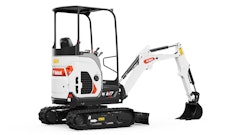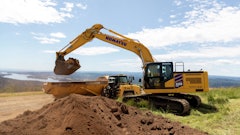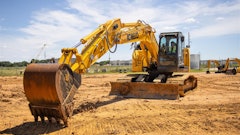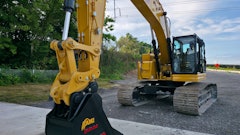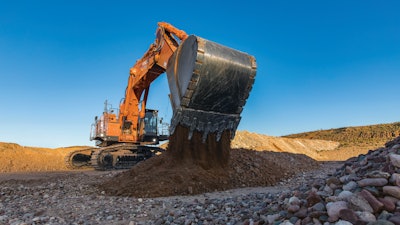
When Dan McQuade, CEO of Rango, took his current position, he had the task of meeting the goals of a five-year growth plan. The expansion and diversification plan were the vision of the leadership team and Rodney George, one of the founders of Rango, which is an excavation, haulage and stockpiling service provider for the mining industry, headquartered in the Phoenix, AZ area.
With this strategic vision, the company has seen exponential growth in the past couple of years – leaping from 45 employees in 2017 to nearly 200 employees and 225 pieces of heavy machinery today. By expanding its mining, hauling and aggregates service offerings, as well as its geographic footprint, the family-based corporation has hands in multiple honey pots – including Rango Honey, a sister company that specializes in honey and beekeeping.
With the evolution of Rango’s mining business, there’s little patience for equipment that isn’t ready to handle the fast pace. Among all the business changes that have occurred, one thing that has remained the same is the company’s commitment to Hitachi excavators, specifically, the 1200 series.
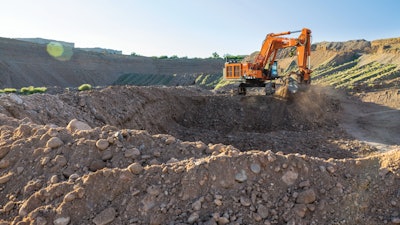
Rango has had several EX1200-5 and EX1200-6 excavators and was impressed with their productivity and speed. When the opportunity arose to order the all-new EX1200-7 through its dealer, Arnold Machinery of Phoenix, it was the clear next step. Rango’s EX1200-7 became the first Dash-7 to be delivered and digging on North American ground.
The crew put the new machine to work immediately, breaking through 15 ft. of concrete-like conglomerate to mine aggregates at a jobsite in Mesa.
“We’re like a bunch of kids in a candy store,” said Dave Johnson, general production superintendent at Rango. “Especially when the new 1200-7 was delivered. I had multiple operators on other jobs asking when they were going to be able to run it. We all got pretty excited.”
Designed to Make a Bottom-line Difference
McQuade said the Hitachi excavators are key to keeping jobsites moving and producing at high volumes.
“It’s no secret that the excavator is kind of like the kingpin on your job,” McQuade commented. “It’s the most valuable piece of equipment, and sometimes the single piece of equipment that we have on the job. Keeping its efficiencies near 100% is what’s going to make the job successful in the long run. It’s as simple as this: if a trackhoe or loading truck is waiting, then we’re losing money.”
The combination of uptime and power plus ease of transport makes a bottom-line difference. “With some competitor machines out there, you might need 12 heavy haul trucks, cranes and multiple people to move a machine,” McQuade said. “That can cost thousands and thousands of dollars. The 1200-7 is easy to move and then put back together, which is a benefit for us.”
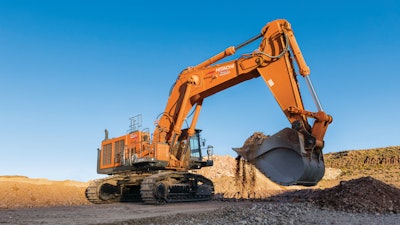
Johnson is pleased with the new machine, as well. “I can’t emphasize enough how fast these machines are. It’s an EX1200 and it feels like you’re running a machine that’s half the size,” he said. “It’s going to run as fast as I want it to run, and I’m going to be able to get as many loads out in the day as I can with that machine, even through caliche and the tough stuff.”
Since Rango works heavily in aggregates, having an excavator powerful enough to dig through tough conglomerate has a huge impact on productivity.
“With other machines, when you hit tough caliche, it feels like they power out,” said Johnson. “The bucket would stop and sometimes lift the whole machine up off the ground, tracks and all. With the Hitachis, they just keep going.”
Adapted from an article that appeared in Hitachi’s BREAKOUT magazine, Spring 2019 issue.



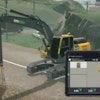
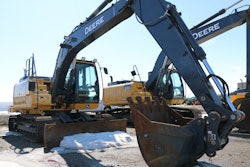
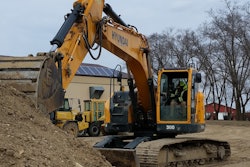
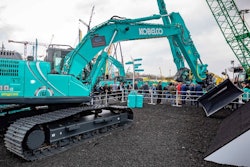





![Hcm Ax Landcros Dual Branded Logo[25]](https://img.forconstructionpros.com/mindful/acbm/workspaces/default/uploads/2025/11/hcmaxlandcros-dual-branded-logo25.Qhg3vUCjoK.jpg?ar=16%3A9&auto=format%2Ccompress&bg=fff&fill-color=fff&fit=fill&h=135&q=70&w=240)
